Dan Dan Noodles
on Jan 02, 2019, Updated Aug 13, 2023
This post may contain affiliate links. Please read our disclosure policy.
A classic Sichuan Lunar New Year dish.
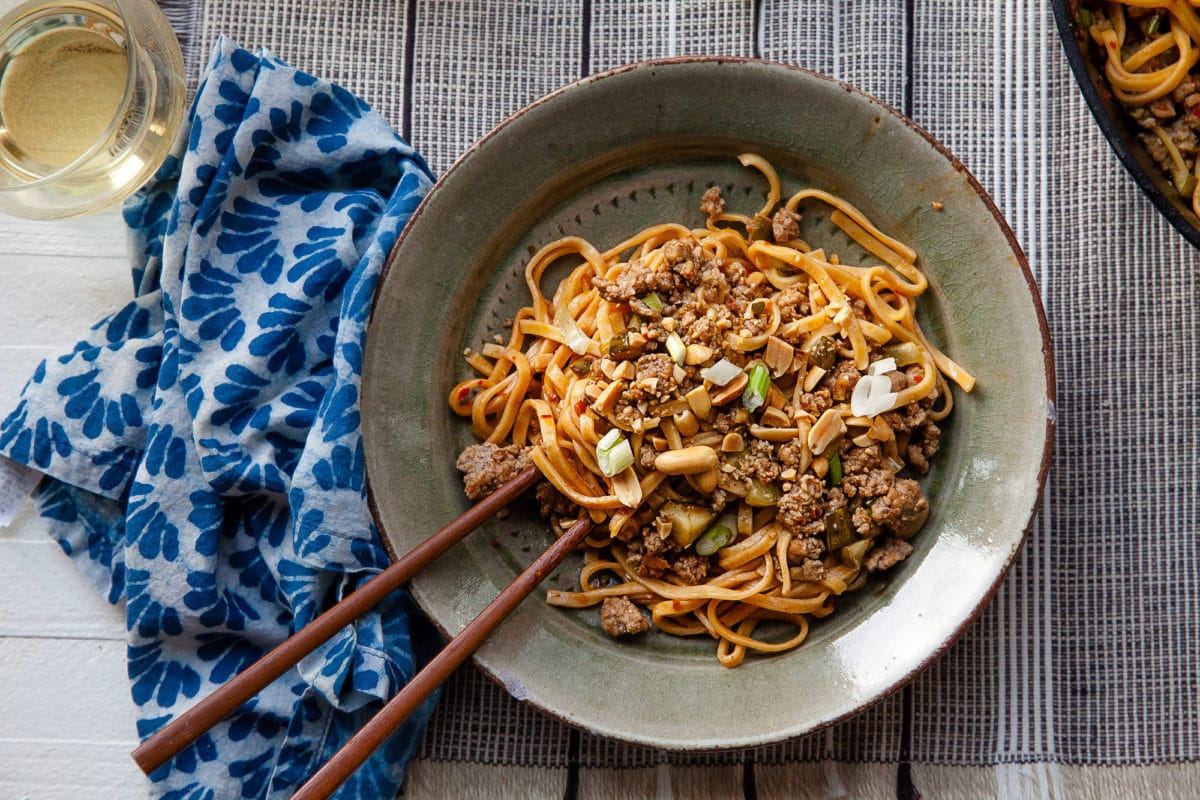
Dan Dan Noodles are a favorite classic Chinese dish originating in the Sichuan province. Noodles have been a part of Chinese cuisine for over 4,000 years, and long strands symbolize longevity, which is one of the nicest things you can wish for on the Lunar New Year (this year, on the 5th of February).
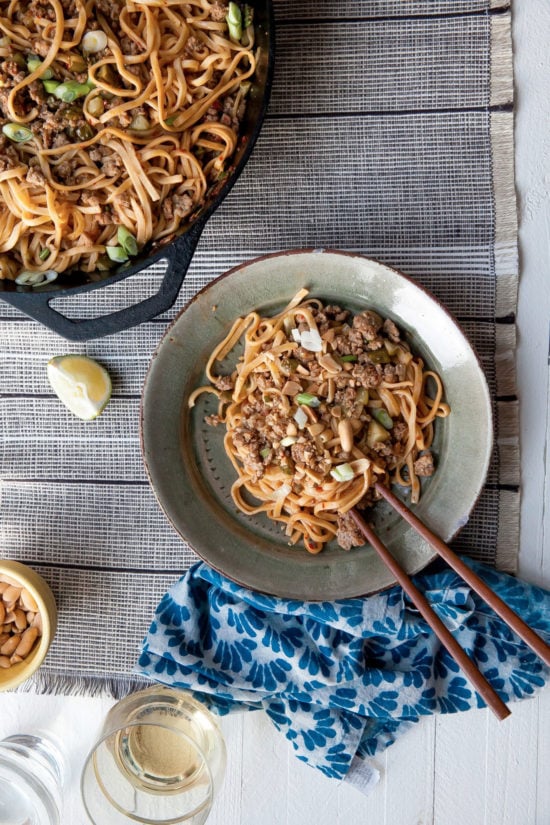
Dan Dan Noodles are essentially long skinny noodles topped with a highly flavorful sauce built on ground pork, and seasoned with pickled vegetables, chilis, soy sauce, and a bit of Chinese wine and vinegar.
This dish was originally one of the street foods of the province. The name Dan Dan refers to the pole that the street vendors used to carry the pots of food for sale: one for the noodles, another for the sauce. They are also known as “peddler’s noodles.” They are served hot (leftovers can be reheated in the microwave!).
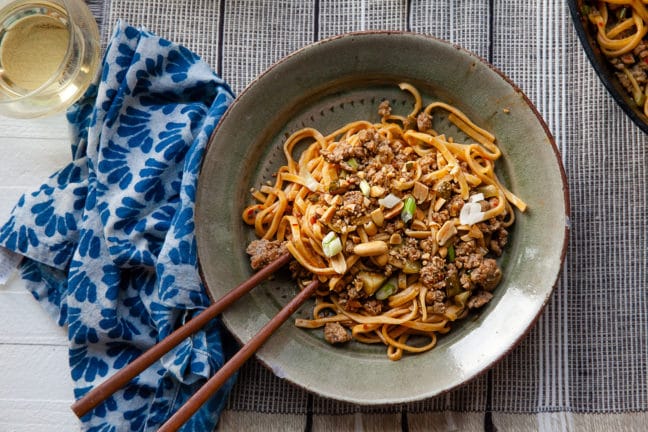
So, I decided to dig in, and figure out a recipe that was at least glancingly authentic, but also adaptable for anyone without a robust Asian pantry. This is my take, and my decidedly non-Asian family loved it.
A classic Sichuan Lunar New Year dish, spicy, with loads of texture, and good luck built in from the long noodles.
Tweet This
Ingredient Substitutions
If you have access to a great Asian market, great, that’s a fun shopping expedition. Or of course, there is everything any anything available online now. Seek out traditional Chinese ingredients if you want to approach authenticity, but otherwise use these easy substitutions, and still end up with a delicious bowl of noodles.
You can find ya cai or zha cai, which is a preserved vegetable mix, or sometimes just pickled mustard root, available in pouches or cans or jars – that’s what’s used in the authentic versions of this dish. Otherwise, regular pickles will do.
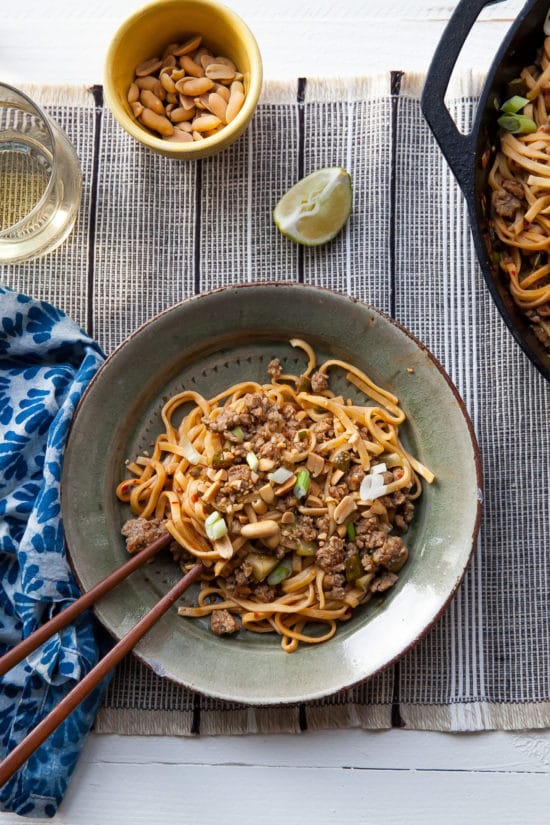
If you don’t have Chinese black vinegar, you can substitute even parts of rice vinegar and balsamic vinegar – or frankly really any vinegar would be fine, but that combo will give you the closest approximation. Dry sherry is a fine substitute for the mirin or Shaoxing rice wine.
There are loads of versions of this dish, as there are with any classic recipes. Some are brothier than others, some have peanut butter, or sesame, or ginger, or Szechuan peppercorns added. Sichuan cooking is often quite spicy, and these noodles are no exception. If you’re feeling a little timid about the amount of chili sauce you can always dial it back a bite – these noodles definitely pack a kick.
Ok, tell me what you think!
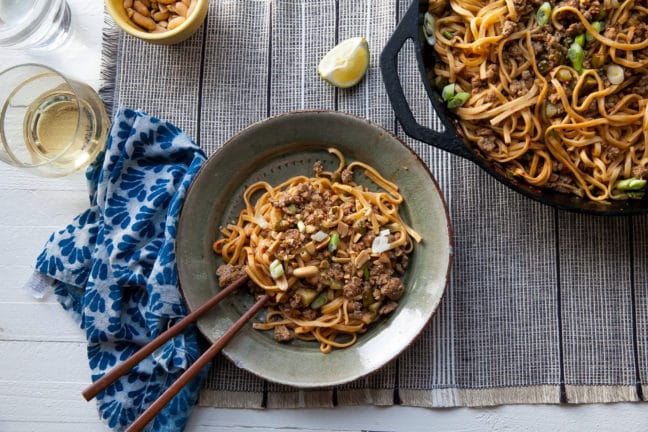
More Chinese-Inspired Recipes:
- Congee (Chinese Rice Porridge)
- Shiitake Mushroom and Spinach Dumplings
- Sweet and Sour Chicken
- Shrimp Lo Mein
Pin this now to find it later
Pin It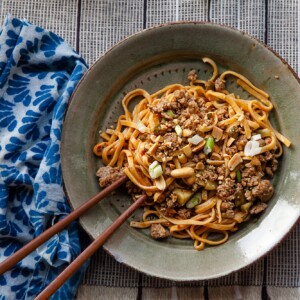
Dan Dan Noodles
Ingredients
For the Sauce
- ¼ cup chili garlic sauce
- ¼ cup vegetable peanut, or canola oil
- 2 tablespoons Chinkiang or Chinese Black vinegar see notes above for substitutions
- 3 tablespoons soy sauce
- 1 tablespoon sugar
- 4 scallions minced
For the Pork and Noodles
- 1 tablespoon vegetable or peanut oil
- 1 pound ground pork
- ¼ cup chopped jarred Chinese pickled vegetables or small diced pickles
- 1 cup roughly chopped arugula optional
- 2 teaspoons finely minced garlic
- 2 tablespoons Chinese rice wine (which might be called Shaoxing or a Japanese version is called Mirin, or use dry sherry)
- 1 cup chicken broth
To Serve
- ¼ cup crushed roasted peanuts
- ¼ cup thinly sliced scallions
- 16 ounces fresh Chinese wheat noodles or 8 ounces dried Chinese noodles or substitute spaghetti
Instructions
- Bring a large pot of salted water to a boil.
- Meanwhile, make the sauce. Combine the chili paste, 1/4 cup oil, vinegar, soy sauce, sugar, and minced scallions in a large bowl and stir to mix well.
- Heat the 1 tablespoon vegetable or peanut oil in a large skillet or wok over high heat. Add the pork and sautéed until browned, about 3 minutes. Drain if there is any liquid in the pan, then return to the pan. Stir in the preserved vegetables or pickles, arugula (if using) and the garlic, and cook for another minute. Add the rice wine and stir until it is evaporated, about 1 minute. Add the broth and bring to a simmer, then remove from the heat.
- Add the noodles to the boiling water and cook according to package directions (fresh usually take about half as long as dried). Drain.
- Stir the sauce to re-combine, then add the noodles to the sauce and toss to coat. Add the pork mixture and toss again. Serve hot, in shallow bowls, sprinkled with the peanuts and sliced scallions.
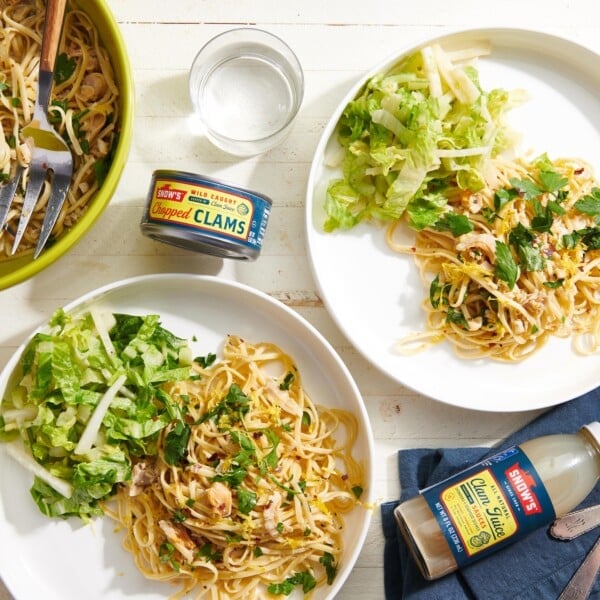
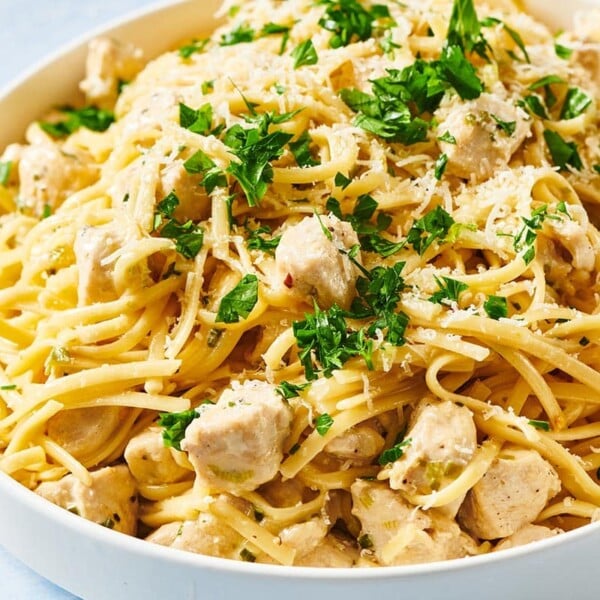
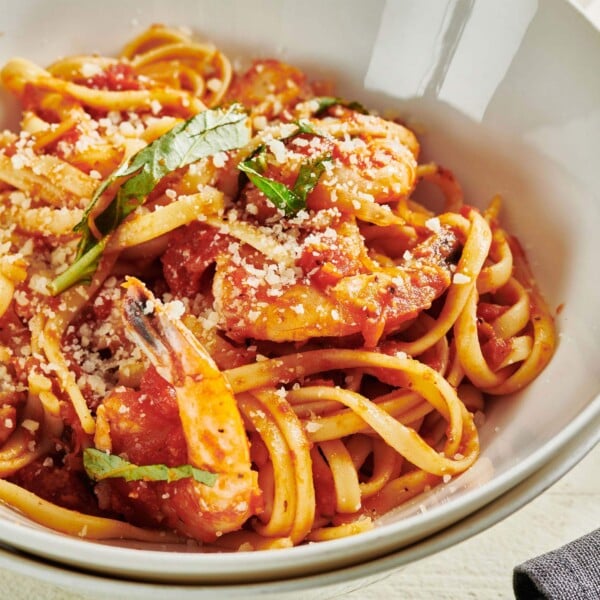
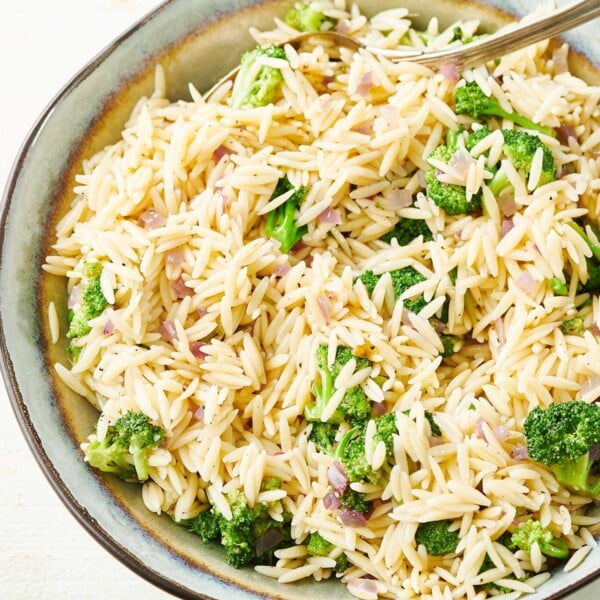









No Chinese sesame paste? I’ve seen this and other recipes also exclude broad bean paste but I cannot conceive of authentic Dan Dan noodles without Chinese sesame paste.